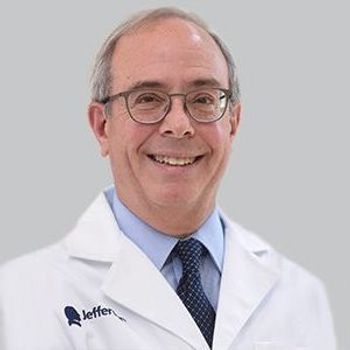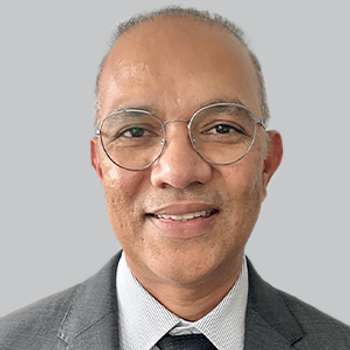
Parkinson Disease Positive Outlook Stems From Improvements in Research

Hubert Fernandez, MD, the director of the Center for Neurological Restoration at Cleveland Clinic, detailed the importance of raising awareness for Parkinson disease and the strides made in research.
Hubert Fernandez, MD
This year, World Brain Day was dedicated to bringing awareness towards Parkinson disease (PD), the fastest growing neurodegenerative disorder that currently remains cureless, but has made significant strides over the past decade. Often characterized by the symptoms associated with it, patients with PD struggle with a multitude of daily living activities, headlined by the inconsistent ability to walk, fall asleep, or wake up.
Understanding the around-the-clock care and full force effort it takes to take care of a person with PD is something Hubert Fernandez, MD, is all too accustomed to. A clinical trial investigator by nature, he has seen both the struggles and strides the PD research community has made to combat the symptoms associated with the disease.
Fernandez, who is the director of the Center for Neurological Restoration at Cleveland Clinic, recently discussed a multitude of topics regarding PD with NeurologyLive, including the importance of World Brain Day, movements in research, and technological and therapeutic innovations that have helped control the disease.
NeurologyLive: What is the significance of World Brain Day?
Hubert Fernandez, MD: We take every opportunity to make people aware about what is going on around us. We’re still in the midst of a different kind of persevering pandemic. I’m not talking about COVID-19, I’m talking about Parkinson’s disease and neurodegenerative disorders in general. Because of our aging population, if we do not find a cure these neurodegenerative disorders such as PD, Alzheimer disease, Lou Gehrig’s disease, in 20 to 30 years, there will be more people dying from these disorders than all of cancer. We are outpacing cancer with regards to death rates. As neurodegenerative clinicians and scientists, we consider this our own pandemic within the pandemic. When we have awareness days like today, we’re all for it. I am a movement disorders neurologist but specifically a Parkinson’s specialist. Guess what? The fastest growing neurodegenerative disorder is not Alzheimer’s, it’s PD. PD is outpacing even the most common neurodegenerative disorder we have, which is AD.
Is there any sort of specific types of research that pique your interest the most when discussing PD?
I’m a clinical trialist by nature, so I test different drugs and devices that can improve the lives of PD patients. Of course, the “holy grail” to us is to find the cure, whether that be a drug or combination of drugs and procedures that can stop or reverse PD. We also realize that while we need to continue working on this, it is not going to happen tomorrow. Just like a vaccine for COVID-19 is not going to be available maybe sooner than 2020. This is not just a virus; this affects every organ system in the body. In the meantime, you have 10 million people suffering from this illness. What do you do for them? What we’re working on is a 2-pronged approach. First, is our efforts to find the cure and to slow or stop disease progression. Second, is while waiting for that, look for things that can improve their quality of life. For example, 50% of PD patients are depressed. A quarter of them are anxious and have panic attacks, 90% of them have constipation, 95% of them can’t sleep at night and have difficulty waking up in the morning. What do you do to enhance it to eliminate or alleviate these problems while waiting for the cure? We’re working on 2 sides of the coin here because we need to be practical and live with the present, but at the same time be optimistic for the future.
I think a big percentage of cures we’ve had are accidental. Most of the time we stumbled on it as we were studying the disease. The other half are intentional. You have a hypothesis, you chased it, and then you found the answer. The other half is while chasing something, you observed another thing, and that led you to the cure. The good news is that more and more scientists because of World Parkinson Day, Word Brain Day, the Michael J. Fox Foundation, have had their awareness to PD exponentially increased. Therefore, there are more scientists around the world, working on trying to slow or stop disease progression, than there have been 1—2 decades ago. Just like with anything, the more people working on it, the higher chance of an accident happening for this, a good accident. That’s our hope. We’re looking at everything from stem cells to gene therapy, to immunotherapy, human monoclonal antibodies and much more to address PD.
In the meantime, we’re looking at symptomatic therapies. We have a fairly decent offering to PD patients in that we have medications at the very least that can help minimize the tremor, stiffness, and the slowness. One, they’re not perfect. Two, they don’t last long enough. The disease progresses still and therefore the response earlier on may not be as good later on. Therefore, we need to keep upping our game because PD is relentless. It poses a different challenge every month, every quarter, every year. At some point, we’re going to run out of things to offer the patient to maintain their quality of life. That is our practical challenge as we search for the cure as well.
Are there any technology or therapeutic innovations that are you are most excited about in the treatment of PD? If so, what advantages do they bring to the disease management?
The good thing is that we understand PD much more than we did even a decade ago. This is not a small thing, because the more we understand the pathophysiology of an illness, the more we can create or test targeted therapies toward that. Whereas before, it was just a crapshoot treatment. For, example let say someone has pneumonia, but you don’t know what it is yet. What are you going to do with that patient? Well, you’re going to give them something to lower their fever, something to keep their hydration status, something for their muscle aches and pains, and something that’s going to suppress their cough. But you haven’t done anything to get rid of the organism that’s causing the pneumonia. That was where we were in PD. We were doing everything else. We were keeping them less rigid, giving them muscle relaxants, but weren’t attacking the source of the problem. Now we’re understanding the source of the problem and therefore can test agents that can disrupt the cascade of events that lead to PD or make PD worse by the day. What makes us excited is that we’ve identified genes and gene mutation that is responsible for some of the PD, not all of the PD patients, but for some of them. About 5—10% of PD are familial or inherited. We’ve identified those genes, so now we have to develop agents that will attack those genes from spreading or mutating more than, which can essentially act as a cure. We’re currently in that are right now.
Another area we now know is the abnormal proteins that clump and possibly cause PD. If we develop antibodies, or agents that can corral these abnormal proteins and prevent them from spreading throughout the brain, then we’ve slowed PD or stopped it all together. We’re in that phase of testing those human monoclonal antibodies that can segregate and prevent these pathological proteins from spreading throughout and doing their damage. If all else fails, we still have DBS, or deep brain stimulation surgery, which is probably our biggest medical surgical revolution in the last decade. The problem with DBS surgery is that it is brain surgery, and quite expensive too. Not everyone wants to have a hole drilled in their skull. It is also not something that we can offer to everyone. DBS requires a certain window where it is time to intervene. Before that it may be too soon, and beyond that it can be too late. As great as it is, it can only be offered to a smaller subset of PD patients. But there is now more advancements to DBS so that the window is becoming larger. That excites me because that is living in the present while waiting for the cure. Our clinical trials are much more sophisticated now. They’re much more ambitious as compared to before. A decade ago, our clinical trials were to stop the tremor, make patients looser, and make them walk a little better. Now, we’re addressing cognitive impairment. We’re addressing slowing disease progression and we’re testing more and more devices for advanced stages of PD. We’re fortunate, but we have a long way to go.
Transcript edited for clarity.
Newsletter
Keep your finger on the pulse of neurology—subscribe to NeurologyLive for expert interviews, new data, and breakthrough treatment updates.































